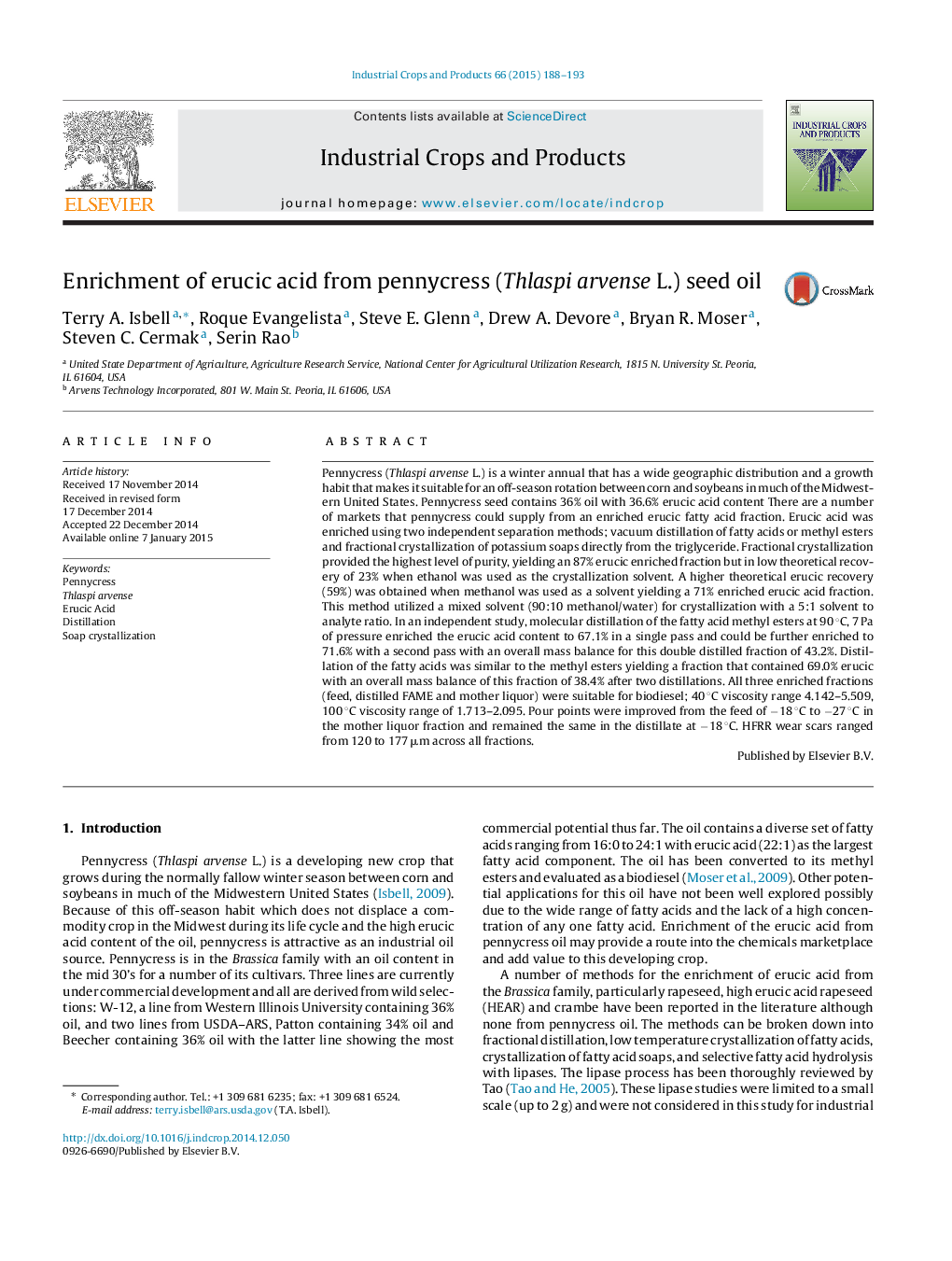| کد مقاله | کد نشریه | سال انتشار | مقاله انگلیسی | نسخه تمام متن |
|---|---|---|---|---|
| 4513222 | 1624843 | 2015 | 6 صفحه PDF | دانلود رایگان |

• Pennycress fatty acids fractionated by two methods; distillation and soap crystallization.
• Distillation of methyl esters gave 71.6% methyl erucate in two distillation passes.
• Distillation of fatty acids gave 69.0% erucic acid fraction in two distillation passes.
• Crystallization of the potassium soap from ethanol gave an 87% erucic enriched fraction but low recovery (23%).
• Crystallization of the potassium soap from methanol gave an 71% erucic enriched fraction with good recovery (59%).
Pennycress (Thlaspi arvense L.) is a winter annual that has a wide geographic distribution and a growth habit that makes it suitable for an off-season rotation between corn and soybeans in much of the Midwestern United States. Pennycress seed contains 36% oil with 36.6% erucic acid content There are a number of markets that pennycress could supply from an enriched erucic fatty acid fraction. Erucic acid was enriched using two independent separation methods; vacuum distillation of fatty acids or methyl esters and fractional crystallization of potassium soaps directly from the triglyceride. Fractional crystallization provided the highest level of purity, yielding an 87% erucic enriched fraction but in low theoretical recovery of 23% when ethanol was used as the crystallization solvent. A higher theoretical erucic recovery (59%) was obtained when methanol was used as a solvent yielding a 71% enriched erucic acid fraction. This method utilized a mixed solvent (90:10 methanol/water) for crystallization with a 5:1 solvent to analyte ratio. In an independent study, molecular distillation of the fatty acid methyl esters at 90 °C, 7 Pa of pressure enriched the erucic acid content to 67.1% in a single pass and could be further enriched to 71.6% with a second pass with an overall mass balance for this double distilled fraction of 43.2%. Distillation of the fatty acids was similar to the methyl esters yielding a fraction that contained 69.0% erucic with an overall mass balance of this fraction of 38.4% after two distillations. All three enriched fractions (feed, distilled FAME and mother liquor) were suitable for biodiesel; 40 °C viscosity range 4.142–5.509, 100 °C viscosity range of 1.713–2.095. Pour points were improved from the feed of −18 °C to −27 °C in the mother liquor fraction and remained the same in the distillate at −18 °C. HFRR wear scars ranged from 120 to 177 μm across all fractions.
Journal: Industrial Crops and Products - Volume 66, April 2015, Pages 188–193